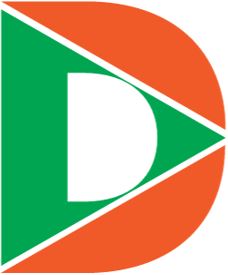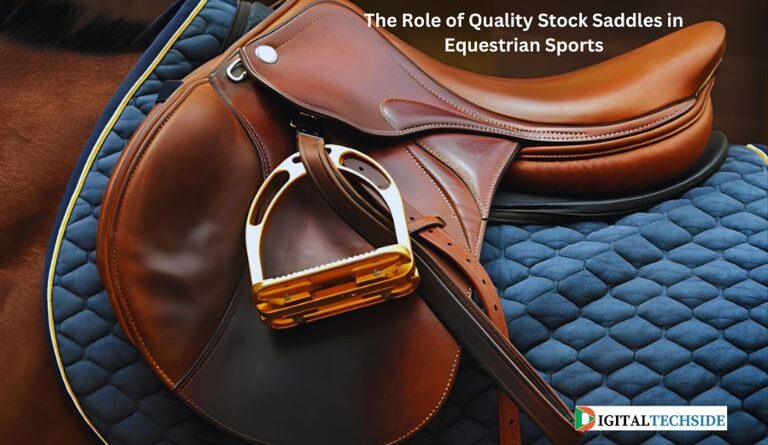The Role of Quality Stock Saddles in Equestrian Sports
Any lover of equestrian sports knows that horses aren’t just tools or pets; they’re partners. Their strength and spirit carry us through lofty jumps, breakneck races, and rigorous dressage routines, demanding nothing less than the very best from us in return. One of the ways we can step up our game as riders is by ensuring our horses are comfortable and well-equipped, and this is where the importance of quality stock saddles cannot be overstated.
Stock saddles are about more than just providing a place for the rider to sit. They play a crucial role in maintaining the physical health and morale of the horse, as well as ensuring the safety and effectiveness of the rider. In this guide, we take a deep dive into the world of stock saddles, peeling back the layers to explore the structure, function, quality markers, and much more.
The Anatomy of a Stock Saddle
A good understanding of your saddle’s structure will help you maintain it and ensure a comfortable fit for both horse and rider. Broadly speaking, a stock saddle consists of a tree (the core framework), a seat, the panels (that provide cushioning and weight distribution), the gullet (space for the horse’s spine), pommel, cantle, stirrups and, various straps for attaching the saddle. The structure is designed to evenly distribute the rider’s weight across the horse’s back, minimizing pressure points and ensuring comfort.
The tree is particularly essential in that it provides the foundation for the saddle’s form and function. It must be strong, yet sufficiently flexible to accommodate the movements of both horse and rider. The seat should “cradle” the rider securely, giving a feeling of safe containment without restriction. The panels, often filled with wool or synthetic materials, are essentially the bridge between horse and rider, relaying messages intuitively along the line of contact.
The Role of Stock Saddles in Equestrian Sports
Stock saddles, named for their use by stockmen, are specially designed to be secure for long hours of riding over rough terrain. This makes them particularly suitable for equestrian pursuits such as endurance riding, mounted orienteering, and trail riding. The high cantle and knee pads provide additional security and stability for the rider, while the generous panel contact area offers excellent weight distribution for the horse, reducing the risk of back injuries.
Now, consider professional equestrian sports like dressage, jumping, or eventing. These disciplines require precision, control and seamless communication between horse and rider. An ill-fitting or inferior quality saddle can greatly impede performance, causing discomfort to the horse and making the rider’s task more arduous. As such, a quality stock saddle is undoubtedly a boon in the sphere of equestrian sports.
Quality: Establishing the Hallmark of a Good Stock Saddle
Craftsmanship, materials, design, and durability – these are the components that separate a good stock saddle from a mediocre one. Premium-quality leather is often the material of choice for stock saddles, as it is durable, flexible, and can be molded and tailored to suit individual requirements.
Craftsmanship is clearly visible in the stitching, finishing of the leather, and smoothness of the edges. The design should be ergonomic, providing ease of movement for the rider while ensuring the horse’s comfort. Finally, durability is a deciding factor; a good stock saddle should withstand the rigors of extended use without any compromise to its structure or performance.
Stock Saddle Fitting: Maximising Horse and Rider Comfort
A perfectly fitted saddle is instrumental in maximising comfort and performance for both horse and rider. The fitting process usually begins by measuring the horse’s back to select a saddle with an appropriate tree size. Other considerations include the horse’s breed, weight, and muscular development, as well as the intended style of riding.
Accommodating the rider’s comfort is equally critical, including attention to seat size, stirrup length, and the positioning of knee and thigh blocks. Ill-fitting saddles can contribute to a host of issues, from minor discomfort to serious health problems for horse and riders, highlighting the importance of professional saddle fitting.
Maintenance of a Stock Saddle
Saddle maintenance is crucial not just for aesthetics but also for longevity and performance. Regularly cleaning the saddle with suitable products helps to keep the leather supple and prolong its life. It’s equally important to store the saddle in a cool, dry place away from excessive moisture.
A good practice is to periodically check the saddle for any signs of wear and tear, paying special attention to stress points. If there are any issues spotted, such as abnormal wear, loose stitching, or compromised padding, these should be addressed immediately, either through repair or replacement, to ensure safety and comfort.
Economic and Safety Aspects of Quality Saddles
While quality stock saddles may come with a higher initial cost, they are an investment that pays off in the long term. They’re typically more durable, require less maintenance, and provide a better fit, resulting in healthier, happier horses and a lower likelihood of costly vet bills or professional refitting.
From a safety perspective, a well-made saddle provides a solid, secure seat for the rider, leading to a reduced risk of falls or injuries. Plus, the use of top-grade materials and stringent quality controls means they’re less likely to fail or break in high-stress situations, a crucial factor in intense equestrian sports.
Insight from the Experts
Professional riders and trainers undeniably agree on the importance of quality stock saddles. Take eventing champion Clayton Fredericks, for instance, who credits his success to the impeccable craftsmanship of his saddles, allowing for clear communication with his horse and superior control. Alternatively, consider dressage rider Mary Hanna, who stresses the difference a custom-fitted saddle can make in horse comfort and performance.
Conclusion
This comprehensive guide aims to provide a well-rounded understanding of stock saddles in equestrian sports—their importance, their quality markers, and how to select the perfect saddle for your horse. The relationship between a horse and its rider is a precious one, let us ensure it remains so by investing in the right equipment that helps both thrive.

As a DIGITALTECHSIDE author, the majority of our articles have been focused on technology, blogging, business, lifestyle, social media, web design and development, e-commerce, money, health, education, entertainment, SEO, travel, and sports.
Contact us at digitaltechside@gmail.com if you have questions of anything.




